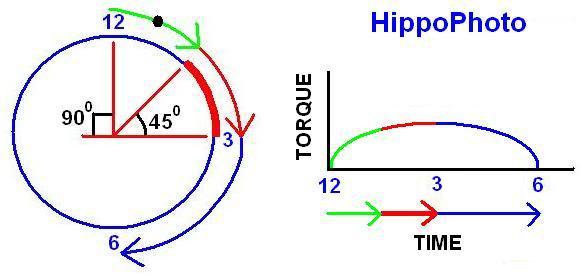The cylinder is a sealed unit filled with a silicon jelly. The viscosity of the silicon jelly increases when subjected to shear. When there is a speed differential between the front and rear propeller shafts, adjacent slotted discs in the VCU rotate in relation to each other. The shearing action of the rotating slotted discs increases the viscosity and resistance to rotation of the silicon jelly.
The rear wheels are 0.8% under driven, so in most conditions the vehicle is effectively front wheel drive, with the rear wheels turning the rear propeller shaft slightly faster than the IRD drives the front propeller shaft. Since the speed differential is low, the increase in viscosity of the silicon jelly is marginal and there is little resistance to relative rotation of the slotted discs.
When there is a significant speed differential between the front and rear propeller shafts , e.g. the front wheels lose traction or traversing rough terrain, the viscosity and resistance to rotation of the silicon jelly increases to a level that slows or stops relative rotation of the slotted discs. With the front and rear propeller shafts locked together, drive is thus transferred from the IRD to the rear wheels.




